Today Current Affairs: 16th December 2022 for UPSC IAS exams, State PSC exams, SSC CGL, State SSC, RRB, Railways, Banking Exam & IBPS, etc
Table of Contents
Aeronomic Studies:

Union Minister of State (Independent Charge) Science & Technology recently informed that ISRO has taken initiatives for feasibility studies on missions to Venus as well as Aeronomy studies.
- The term “aeronomy,” coined and introduced about 60 years ago.
- It refers to the scientific study of the upper atmospheric regions of the Earth and other solar system bodies.
- It includes the distribution of temperature, density, and chemical constituents, and the chemical reactions that occur.
- It also includes the studies of aurora, airglow, the ionosphere, Van Allen radiation belts, cosmic rays, and radiative and photochemical phenomena.
- It covers the chemistry, dynamics and energy balance of both neutral and charged particles.
Orcas : Killer Whales

Two cities in United States’ state of Washington have taken steps to formally declare their support for legal rights for a group of endangered orcas. City of Port Townsend and City of Gig Harbor in the Pacific Northwest have signed proclamations to secure the inherent rights of the Southern Resident Orcas.
- Orcas are found across the world and are also known as “killer whales”.
- It is the largest member of the Delphinidae family, or dolphins.
- Members of this family include all dolphin species, as well as other larger species, such as long-finned pilot whales and short-finned pilot whales, whose common names also contain “whale” instead of “dolphin”.
- Killer whales are highly social, and most live in social groups called pods (groups of maternally related individuals seen together more than half the time).
- Killer whales rely on underwater sound to feed, communicate, and navigate.
- Southern Resident killer whales are the only endangered population of killer whales in the United States.
- Despite federal legal protections for nearly two decades, the population of the orcas continues to decline and is critically endangered.
Orunodoi Scheme : Assam

10.54 In lakh, the additional number of people will benefit from Assam government’s second edition of ‘Orunodoi’. With this, the total number of beneficiaries will come to 27 lakh.
- It is a scheme of the Government of Assam is launched on 2nd October 2020.
- Under ‘Orunodoi’, monetary benefits have been envisaged for more than 24 lac poor household in the state.
- Government of Assam will provide monthly financial assistance to the eligible beneficiaries for procuring medicines, pulses, and sugar.
- The schematic benefit has been enhanced from 830/- to Rs. 1000/ Women.
- Women being the primary caretakers of the family are kept as beneficiaries of the scheme.
- ‘Orunodoi’ scheme will provide Financial Assistance of Rs. 1000 per month through Direct Benefit Transfer (DBT) scheme.
- The financial outlay for Orunodoi is ₹4,142 crore per annum.
- The preliminary selection of the beneficiaries will be done at the level of Gaon Panchayat (GP) Village Council Development Committee (VCDC) Urban Local Body (ULB) based on eligibility/ineligibility conditions.
Cervical Cancer : Report
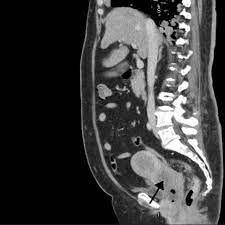
More than 6,00,000 new cases of cervical cancer and more than 3,40,000 deaths from the disease were reported around the world in 2020, according to an observational study published in The Lancet Global Health journal.
- India reported 1,23,907 new cases of cervical cancer and 77,348 deaths, according to the study.
- The study found major declines in cases in Latin American countries including Brazil, Colombia, and Costa Rica; Asian nations like India, Thailand, and South Korea; and Poland, Slovenia, and the Czech Republic in Eastern Europe.
- Countries with the largest average declines in incidence rates per year include Brazil (8%), Slovenia (7%), Kuwait (7%), and Chile (6%).
- The highest increases in rates were seen in Latvia (4%), Japan (3%), Ireland (3%), Sweden (3%), Norway (2%), Northern Ireland (2%), Estonia (2%), and China (2%).
- The study used the International Agency for Research on Cancer’s (IARC) Global Cancer Observatory (GLOBOCAN) 2020 database to estimate the burden of cervical cancer incidence and mortality rates in 185 countries.
- In 2020, overall incidence was 13 per 1,00,000 women; mortality was 7 per 1,00,000 women.
- As many as 172 out of the 185 countries saw more than the 4 cases per 1,00,000 women per year threshold for elimination set by the World Health Organisation (WHO).
- The development of effective vaccination against the human papilloma virus (HPV), which causes cervical cancer, and screening programmes have made cervical cancer a largely preventable disease.
Beypore Uru : Applied For a GI Tag
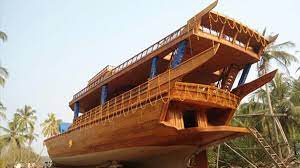
The District Tourism Promotion Council, Kozhikode has applied for a Geographical Indication (GI) tag for the famous Beypore Uru (boat).
- It is a wooden dhow (ship / sailing boat / sailing vessel) handcrafted by skilled artisans and carpenters in Beypore, Kerala.
- It is mainly made of Malabar teak, probably the biggest handicraft in the world.
- Beypore urus are purely made of wood, without using any modern techniques, and traditional methods are used to launch this ship into the water.
- The carpenters manually join each piece of wood to build the large boat.
- Uru making in Beypore is a centuries old tradition that was established since India began its maritime trade with Mesopotamia.
- Beypore is a town located on the banks of the Chaliyar River.
- According to records, Uru ships have been in high demand for around 2,000 years.
- The Khalasis are the traditional artisans responsible for the manufacture of the Uru.
- They are the ones who launch these urus into the water, setting them ready for travel.
- Arab traders were especially enamoured of them, and were among the first major patrons of these vessels.
- It takes at least four years and the effort of over forty Khalasis to build an Uru.
GLAAS Report 2022:
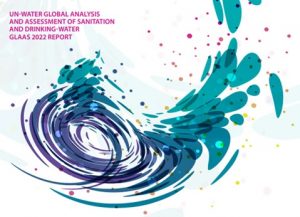
The Global Analysis and Assessment of Sanitation and Drinking-Water (GLAAS) report was released by the World Health Organization (WHO) and UN-Water.
Highlights of the Report:
- Less than one-third of countries reported maintaining enough human resources to manage essential Water, Sanitation and Hygiene (WASH) tasks.
- 45% of countries are on track to meet their drinking-water coverage targets, but only 25% are meeting their sanitation targets.
- More acceleration is needed to achieve national targets.
- While WASH budgets in some countries have increased, a significant portion — more than 75% of them — reported having inadequate resources to carry out their WASH plans and objectives.
- Most WASH policies and plans do not consider climate change threats to WASH services, nor do they take the climate resilience of WASH technology and management systems into account
- The increasing frequency and intensity of extreme weather events caused by climate change continue to hamper the delivery of safe WASH services, thus affecting the health of users.
- Aid for water and sanitation decreased by 5.6% between 2017 and 2020, and the geographical targeting of the aid shifted.
- In sub-Saharan Africa, the proportion of WASH aid dropped from 32% to 23%, while in Central and Southern Asia, it increased from 12% to 20%, and in Eastern and South-Eastern Asia, it increased from 11% to 20%.
WASH:
- WASH is an acronym that stands for the interrelated areas of Water, Sanitation and Hygiene.
- The World Health Organisation (WHO) WASH Strategy has been developed in response to Member State Resolution (WHA 64.4) and the 2030 Agenda for Sustainable Development (SDG 3: Good Health and Well Being, SDG 6: Clean Water And Sanitation).
- It is a component of WHO’s 13th General Programme of Work 2019–2023 which aims to contribute to the health of three billion through multisectoral actions like better emergency preparedness and response; and one billion with Universal Health Coverage (UHC).
Tramjatra Event : Moving Tram Carnival
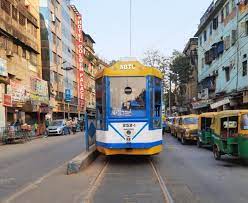
Kolkata will witness an event that will celebrate 150 years of its iconic tram and renew hope that this non-polluting mode of transport does not become entirely extinct in February, 2023.
- Tramjatra (tram’s journey) is a moving tram carnival that was started back in 1996 jointly by enthusiasts from Melbourne and Kolkata.
- At the time, Kolkata, the only Indian city where the tram still runs, was home to about two dozen routes.
- Today the number of routes that remain operational has shrunk to just two.
- The 2023 event, therefore, will be more about impressing the West Bengal government to preserve the tram.
- Tramjatra is essentially an international collaboration of trammies, artists, environmentalists, and tram-loving communities.
- Theme for 2022: Heritage, Clean Air and Green Mobility
- Objective: It seeks to educate people, particularly the younger generation, about climate change, air pollution, and sustainable development objectives with a focus on green mobility and Kolkata’s tram legacy.
National Rail Plan (NRP):

The National Rail Plan envisages that the share of freight traffic by rail should go up from the current share of 27% to 45% by 2030
- The Government had come up with the National Rail Plan last year.
- Objectives of the plan:
- To create capacity ahead of demand by 2030, which in turn would cater to growth in demand right up to 2050.
- To increase the modal share of Railways from 27% currently to 45% in freight by 2030 as part of a national commitment to reduce Carbon emissions and to continue to sustain it.
- To assess the actual demand in the freight and passenger sectors
- Forecast growth of traffic in both freight and passenger year on year up to 2030 and on a decadal basis up to 2050.
- Reduce transit time of freight substantially by increasing the average speed of freight trains from the present 22Kmph to 50Kmph
- Reduce the overall cost of Rail transportation by nearly 30% and pass on the benefits to the customers.
- The construction of Dedicated Freight Corridors (DFCs) on the important high-density route
Microplastics:
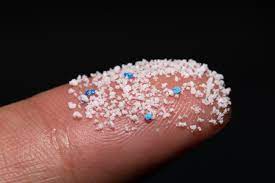
As per the new study, with our every breath, we may be inhaling substantial quantities of microplastics that eventually flow into our blood and accumulate in our organs.
- Previously, it was reported that as much as 74 tonnes of microplastics fell from the air and settled on rooftops, gardens and other surfaces in Auckland, New Zealand in 2020, suggesting the possibility of microplastic mists and clouds existing in the atmosphere
- Microplastics are tiny pieces of plastic that are less than 5 millimetres in length.
- Global Initiatives:
- Global Partnership on Marine Litter (GPML) to develop policies to control marine litter and pollution
- GloLitter Partnerships Project was launched by the IMO and FAO to prevent marine plastic litter from shipping and fisheries
- London Convention, 1972: To control all sources of marine pollution and prevent pollution of the sea
- Plastic Pact (2018) to transform the plastics packaging value chain for all formats and products




